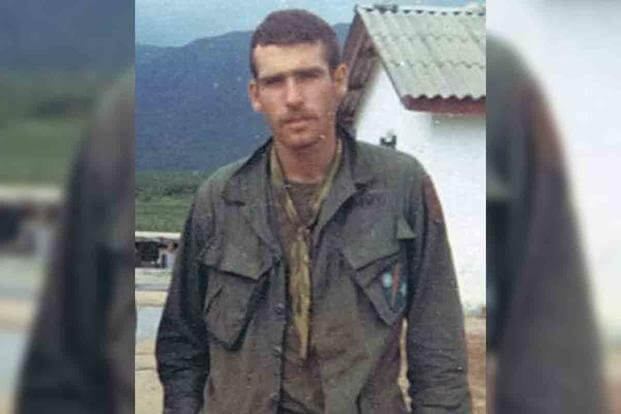
U.S. Army Specialist Peter Lemon, a native of Toronto, earned a Medal of Honor during a North Vietnamese attack on his firebase in South Vietnam on April 1, 1970. He was 19.
[Peter C. Lemon]
It was 2:17 on a Wednesday morning and the Americans of the 2nd Battalion, 8th Cavalry Regiment, knew the enemy were coming. Ground surveillance radar had found them stacked up and swarming at the tree line.
All 220 American soldiers on the base—predominantly members of 2 Battalion’s Company C and Lemon’s reconnaissance element, Company E—were up and ready. The Toronto-born Lemon was helping man a heavy machine gun.
Lemon had moved with his family to Michigan at age two and joined the U.S. military after high school. At just 19 years old, he was about to become one of the youngest recipients of America’s highest award for gallantry, the Congressional Medal of Honor. Sixty-one Canadians have earned the award, four since 1900.
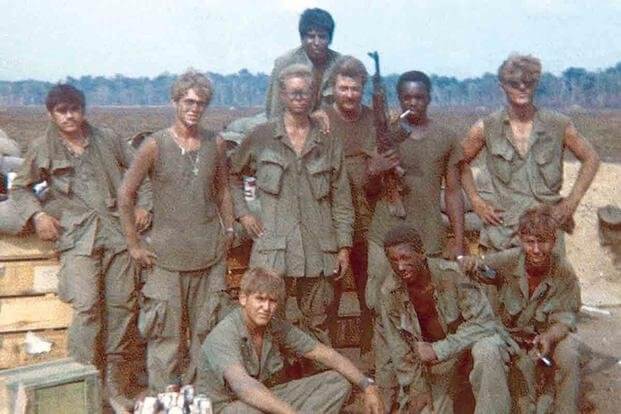
Survivors of the April 1, 1970, attack on Firebase Illingworth in South Vietnam’s Tay Ninh Province gather after the intense combat that claimed 24 Americans and wounded 54.
[John Ahearn]
The firebase also had four M113 armoured personnel carriers and an M551 Sheridan armoured vehicle. There was a mortar platoon, along with two eight-inch howitzers, three 155mm howitzers and six 105mm howitzers.

Flechettes are steel darts dropped from above or fired from artillery guns onto groups of enemy.
[Wikimedia]
With both his machine gun and rifle inoperable, Lemon hurled grenades until he ran out.
Out of the darkness, all hell broke loose.
The 1st Battalion, 272nd Regiment, People’s Army of Vietnam (known as the North Vietnamese Army, or NVA), pounded the base with more than 300 rounds of mortar and recoilless rifle fire, then launched an infantry assault on the site’s northern end, defended by Lemon’s reconnaissance company.
The NVA troops capitalized on the din, dust and confusion of the bombardment to close ground on the base perimeter unseen.
The Americans’ notoriously temperamental M16 rifles were already jammed and one of the three mortar positions was in flames. The first attackers were at the berm minutes after the attack began. A second mortar position fell, then the third.
A howitzer took a direct hit.
With both his machine gun and rifle inoperable, Lemon hurled grenades until he ran out, then grabbed his disabled weapon and clubbed an enemy soldier who came charging out of the dust cloud.

Lemon would go on to a career as a corporate executive, motivational speaker and author.
[Peter C. Lemon]
Lemon “regained his position, carried a more seriously wounded comrade to an aid station, and, as he returned, was wounded a second time by enemy fire,” said his Medal of Honor citation. “Disregarding his personal injuries, he moved to his position through a hail of small-arms and grenade fire.”
Within minutes the entire area was threatened by fires.
Realizing his sector was about to be overrun, Lemon gathered and threw more hand grenades, resorting to hand-to-hand combat once he ran out.
“He was wounded yet a third time, but his determined efforts successfully drove the enemy from the position. Securing an operable machine gun…Lemon stood atop an embankment fully exposed to enemy fire and placed effective fire upon the enemy until he collapsed from his multiple wounds and exhaustion.”
As the battle raged on, a sapper threw a charge near the ammunition supply in the howitzer position at the centre of the base. Within minutes the entire area was threatened by fires. The ammunition exploded at 3:18 a.m., tearing through a section of berm and spraying the area with shrapnel.
The blast stunned both the infantrymen on the berm and the gunners, and for a moment the Americans stopped firing.
They were helped by an orbiting AC–119 gunship and Firebase Hannas, four kilometres to the south, whose gunners were firing flechette rounds (steel darts) onto the attacking NVA. Company C troops who had taken up secondary positions during the fighting retook the berm and the battle gradually quieted.
So-called dust-off helicopters, the red cross on a white square painted on their noses, arrived at daybreak to evacuate the U.S. casualties, numbering 24 dead and 54 wounded. Lemon had regained consciousness at the aid station and refused to be moved until his more seriously wounded comrades had been taken out.
American patrols located 74 dead NVA.
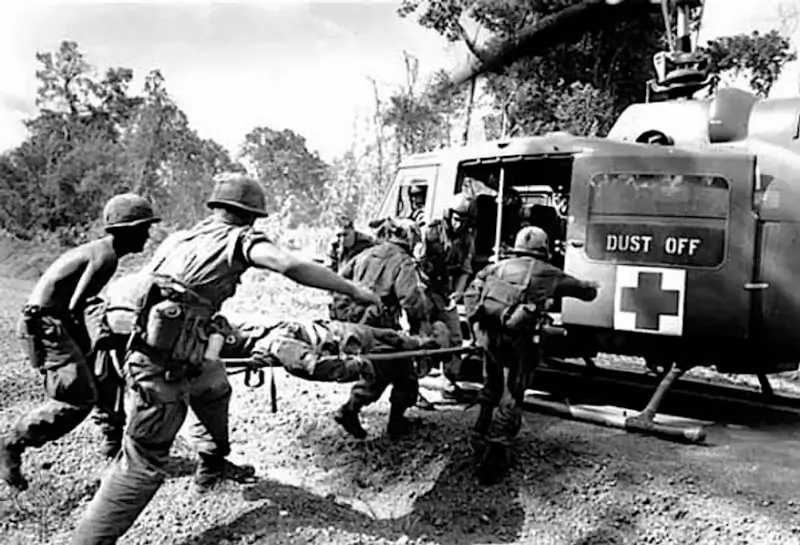
A Dust-off air evacuation crew in action during the Vietnam War. The primary transport was the Bell UH-1 Iroquois (Huey) air ambulance helicopter.
[U.S. Department of Defense]
The other Canadians awarded the medal during the 20th century were honoured for actions during the U.S. occupation of Veracruz, Mexico, in 1914 (navy Lieutenant John Grady of New Brunswick) and the Second World War (Coast Guard Signalman 1st Class Douglas A. Munro of Vancouver, posthumously), and Sergeant Charles A. MacGillivary of Charlottetown).
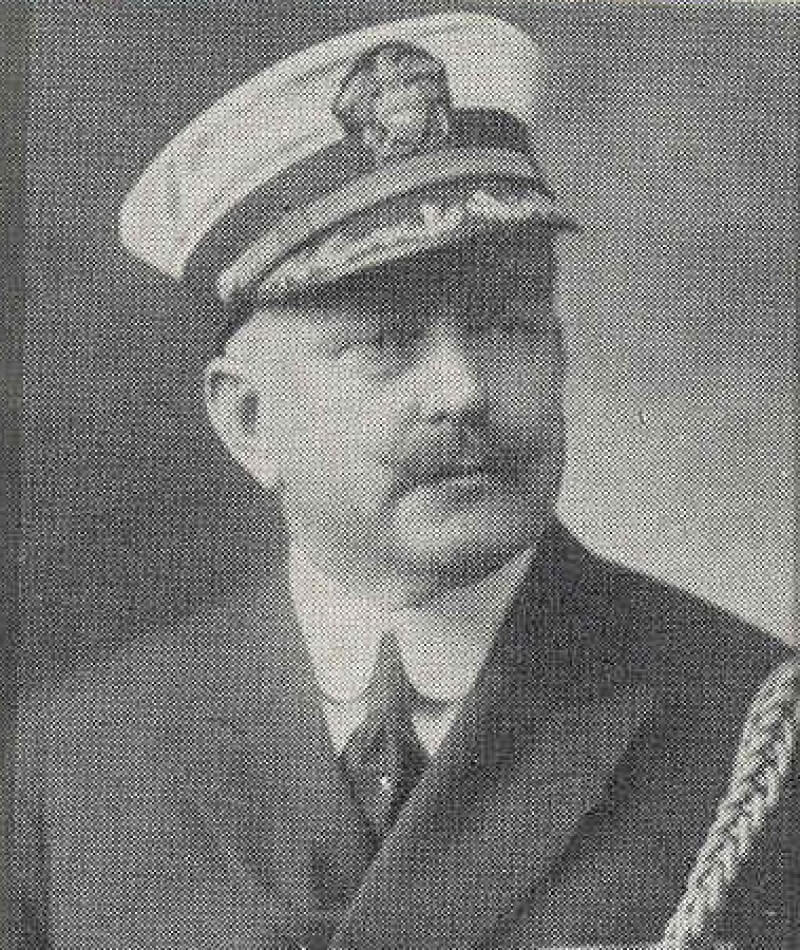
Lieut. (N) John Grady of New Brunswick earned his Medal of Honor during fighting at Veracruz, Mexico, on April 22, 1914.
[U.S. Navy]
Larochelle has been the subject of a grassroots campaign to upgrade his medal to a Canadian Victoria Cross.
Lemon would be promoted to sergeant and become a U.S. Ranger. He retired with the MoH, two Bronze Stars, two Air Medals, the Army Commendation Medal and a Purple Heart to his credit.
After leaving the army, he earned a speech degree at Colorado State University, then an M.B.A. from the University of Northern Colorado in Greeley. He went on to become a corporate executive, motivational speaker and author.
He was proclaimed the University of Northern Colorado’s Humanitarian Alumnus of the Year in 1998 and, in 2009, President Barack Obama presented him with the Outstanding American by Choice award at the White House, recognizing his life of professional achievement and civic contribution.
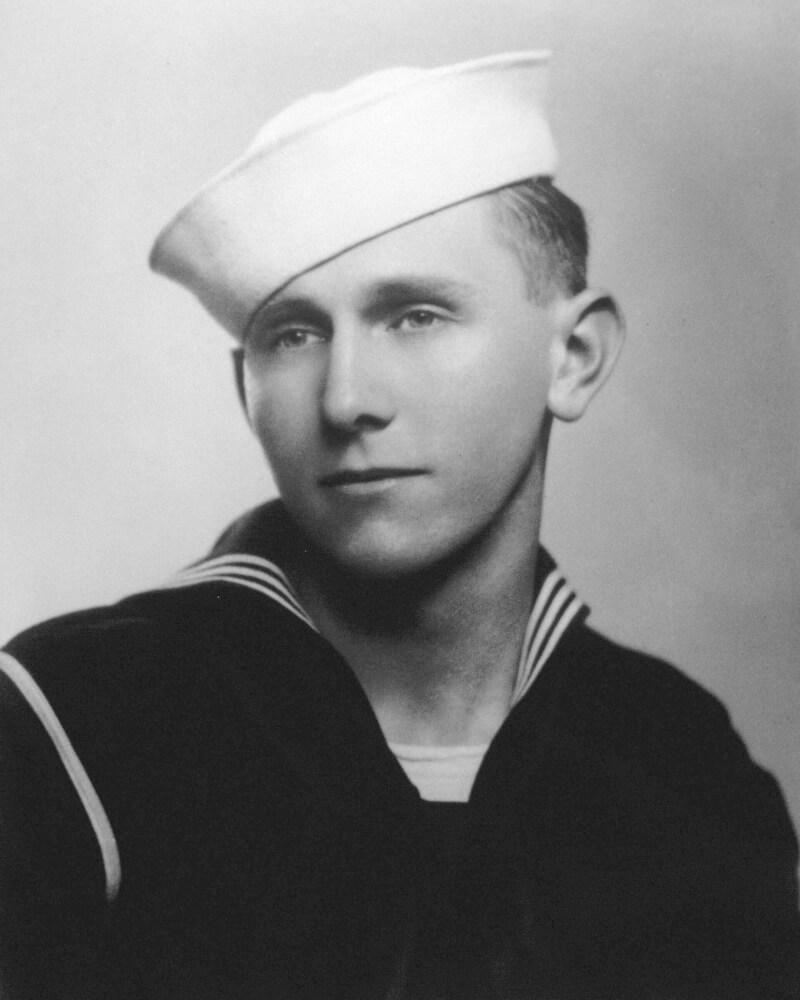
U.S. Coast Guard Signalman 1st Class Douglas A. Munro of Vancouver was awarded a posthumous MoH after he led the extraction of Marines whose position had been overrun by Japanese forces at Guadalcanal. He was killed at age 22 while using the Higgins boat he was piloting to shield a landing craft filled with Marines from Japanese fire.
[Wikimedia]
Larochelle has been the subject of a grassroots campaign to upgrade his medal to a Canadian Victoria Cross, which has never been awarded since it was created in February 1993.
He was concussed, his eardrum ruptured, two vertebrae in his neck fractured and his back broken by the blast from a rocket-propelled grenade. One of two heavy machine guns in his elevated observation post on the perimeter of a coalition strongpoint had been destroyed. Alone and under constant heavy fire, the Sioux Lookout, Ont., native nevertheless remained the point man throughout the hour-long battle, spearheading his unit’s defence against 40 attacking Taliban.
Larochelle never fully recovered, mentally or physically. He died in August 2023 without receiving the award many Canadians felt he deserved. He was 40.
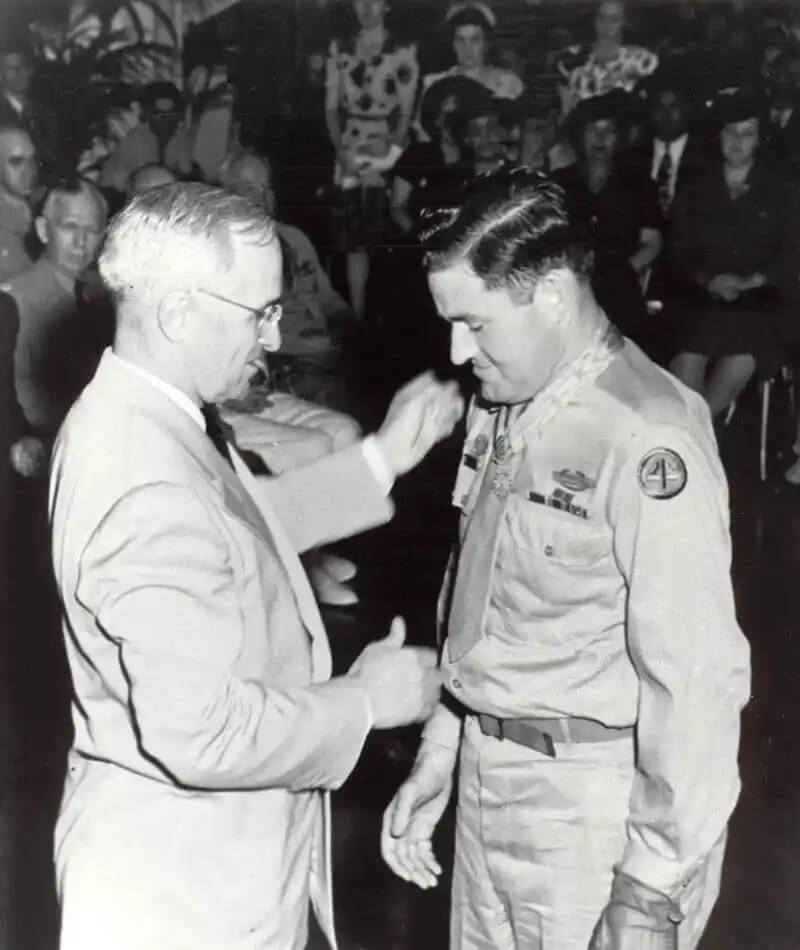
Sergeant Charles A. MacGillivary of Charlottetown receives his Medal of Honor from U.S. President Harry Truman after losing his left arm while single-handedly taking out four German machine-gun positions during the Battle of the Bulge in January 1945.
[Wikimedia]
Advertisement





















